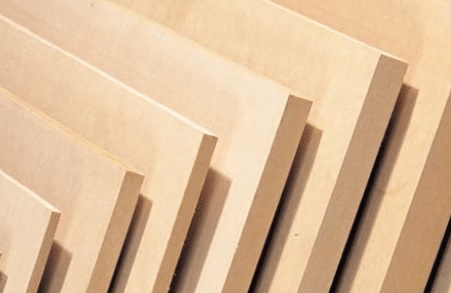Medium-density fiberboard (MDF) is an engineered composite wood product made from residues of hardwood and softwood by breaking it down into wood fibers. MDF has a higher density compared to plywood.

MDF is an acronym for Medium Density Fibreboard. A designed wood product that is cost-effective and long-lasting. It acts as a good substitute material for wood. Medium Density Fibreboard is produced from sawdust and other wood residuals that are further broken into their component fibers. These are fused together with bonding materials like wax and binders into a sheet. A Medium Density FibreboardF board is commonly accessible in thicknesses of 4 to 25 mm and can be plain or pre-laminated to safeguard the surface. Medium Density Fibreboard is available in a variety of finishes as well.
If you are looking best quality engineered wood in the market then go for High-Density Fibreboard (HDF). The density of High-Density Fibreboard (HDF) is 900kg/m3 while the density of 800 Medium Density Fibreboard is 800 kg/m3. HDF is more water-resistant compared to MDF.
Uses of Medium Density Fibreboard:
- It is used to make wooden cabinets.
- MDF is used to make a modular kitchen.
- Medium Density Fiberboard used to make furniture.
- It can be utilized to fabricate doors.
- sometimes it is used to make windows.
- MDF is the primary choice to make Shelves.
- It is also used to make the wooden countertop.
- MDF is a very popular material to make decorative items.
Advantages of Medium Density Fibreboard:
- Very cheap compare to wood.
- It has a smooth surface for painting.
- Easy to cut.
Disadvantages of Medium Density Fibreboard:
- Medium-density fiberboard has less strength than wood.
- Not much durable.
- It absorbs water.
- Difficult to take nails and screws.
